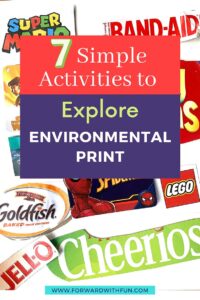
Environmental print is all around us and a part of our everyday life.
When you read the traffic signs as you drive, that's environmental print. As you open the fridge and read the label on the milk, that too is environmental print. Even the ever recognizable Disney Logo is environmental print.
If you haven't put your finger on it just yet, environmental print means the words all around us. As children, environmental print surrounds us and as children become aware of letters and sounds, they look around them and see that written words have always been present in their world.
Often environmental print is the first kind of print that children "read." Why? Well they'll be reading the words that represent things that they can recognize before they really know all their letters and sound.
Does this sound familiar? Your child passes the "Lucky Charms" in aisle six and yells out, "Mom, can we have some of that Lucky Charms?" Well, my friend, they've just read their environment, and whether or not you're prepared to buy the Lucky Charms (there's some on my counter right now), you should be proud of their recognization of the print in their environment.
Is it really reading if my child has just memorized a word or phrase by how it looks? Yes, it is! When kids are reading environmental print they're relying on context: location, font, possibly a picture, and other clues. This is a kind of reading that differs from phonics, where we sound out a word, but it is SO valuable! Children will require memorization to read many words that don't make phonetic sense (such as sight words).
*As an Amazon Affiliate, I may get a small commission for purchases made through links in this post at no extra cost to you.
The more children see and become familiar with letters and sounds, the more comfortable they are trying to read. A print rich environment is a space that has LOTS and LOTS of environmental print.
If you are teaching pre-k or kindergarten, you definitely want to have an environmental print anywhere you can in your classroom. The more exposure kids have to letters and words, the more likely they are to really sink in! Also, seeing lots of words around them will reinforce the principle that words go from left to write and top to bottom, something that needs to be taught and is called "concepts of print." So yes, the more environmental print you have in your home or classroom, the more comfortable children will be interacting with print!
Here are some environmental print examples for your preschool or kindergarten classroom or even your home:
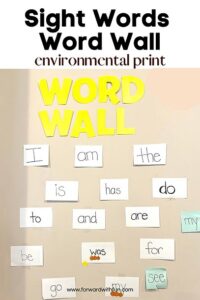
Class-made signs and posters like this classroom helpers sign. I would even add pictures next to the names of the jobs to help promote association of the picture with the word.
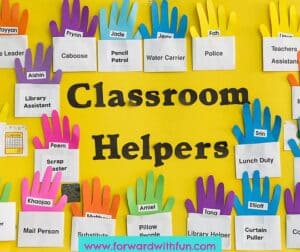
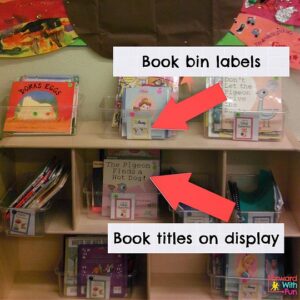
Environmental print alphabet that goes around the room
Handwriting alphabet chart - love that these come laminated!
Daily schedule
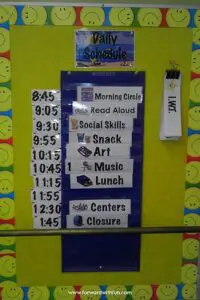
All these are typical examples of classroom environmental print that kids use to make sense of the world around them, building their print awareness: understanding of letters, difference between letters and words, and many other early literacy concepts. So make sure you create a print rich environment in kindergarten and preschool!

These activities are not only fun, they'll also give your students a confidence boost that they ARE a reader.
Though they may not be reading phonetically yet, a big part of reading is using context and picture clues to figure out the words, so yes, recognizing the Spiderman and Batman logos counts as reading. You bet my kid knows the box of Kraft says, "Kraft Macaroni and Cheese."
As kids have small successes reading print in the following fun activities, they're going to more smoothly transition into reading overall. Why? Because practicing early reading skills like reading environmental print will become a preferred activity and of course, with practice comes progress!
These activities are simple and low prep. Use the objects you have lying around the house or classroom. For teachers, you can ask kids to bring in boxes or wrappers from foods they like and magazines for the ones that involve cutting out letters or words.
Cut out the names of kids' favorite foods labels from the kitchen and glue them to a paper. Have them practice reading the names back to you.
I was actually shocked to see my daughter read every label in this activity. The fonts and context give major clues but later when we cut out the packaging, she was still able to read all these words!
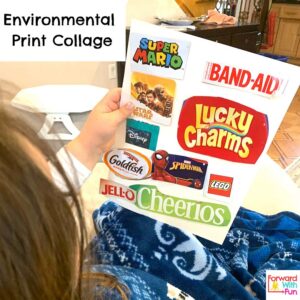
Have your kids look for every letter of the alphabet in their environment. For this activity, you'll want to have some magazines, catalogues, or boxes with labels on them.
As kids find the letters have them, cut out each one and glue it onto your Alphabet Chart till you have found A-Z in the environment. Looking for more ways to expose your child to the alphabet? These 13 epic games will have them loving learning their letters.
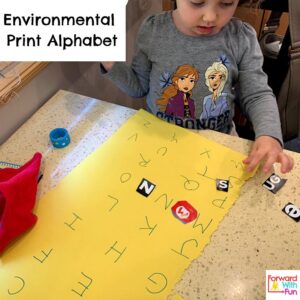
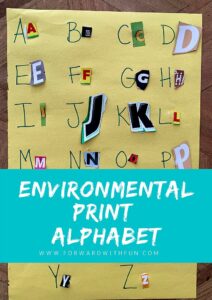
Using a clipboard and paper or a white board, have your child or students walk around the classroom or home and write the print they see in the room. Kids always love a literacy activity that allows them to get moving!
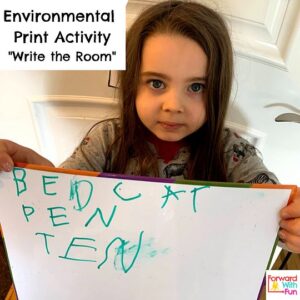
Did you ever do this? On a long car ride, I would always look for all the numbers in order from 1-100. Numbers are considered print too and they're all over our environment, especially when we are driving. There are speed limits, road signs, and license plates.
For this game, I would print out a hundreds chart and have your child cross off the numbers they see. They can do it in order or out of order.
Want to play with the alphabet? Write down the letters from A-Z, and then have them spy each letter on their drive.
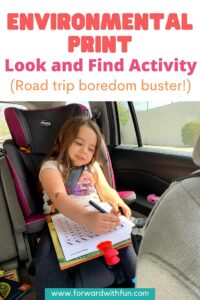
This clever sight word activity from mydayinprek.wordpress.com/ mixes fabulously with reading one's environment. Kids use sentence starters with familiar sight words such as "I see" and "I like the" to move around their space and create sentences with environmental print. For example, "I like the" paired with "goldfish." Really, who doesn't like those addicting little goldfish crackers.
This cute printable from https://www.pre-kpages.com makes a great early literacy center. Just print, laminate, and cut then play. Kids will recognize the labels and logos of child friendly items and places.
So which environmental print activity are you going to try first? If you liked these activities don't forget to share them!
